Tosh Berman's Blog, page 170
March 5, 2017
DAVID BOWIE IS.... In Tokyo
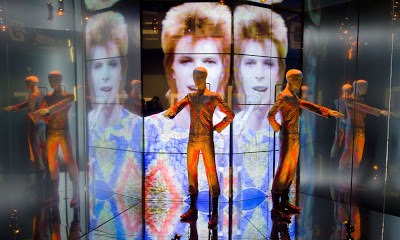
DAVID BOWIE IS ... An Exhibition in Tokyo, Japan
As most of my friends and enemies know, I love David Bowie. I have been thinking of David Bowie for every day since 1972 when I purchased "Honky Dory." My whole life is mapped out by Bowie's releases of album and singles. To say he's important to me is like asking if humans need to drink water. I actually don't understand people who don't like Bowie's music. I have met them, but for me, they're truly alien from another hostile planet. So, one would think I would be bananas over the David Bowie Is" exhibition. The truth is I like it, as a spectacle, but I think they could have done much more of a better show.
I now imagine myself as the curator. First of all, Bowie didn't curate this show. I suspect he looked at it with a very critical eye and his opinion mattered much in the choices and the way the show is exhibited. According to the Victoria & Albert Museum (who put the show together), he had no say in the exhibition. I find this hard to believe. What the show consists of are his stage costumes for both concert tours and videos, as well as his drawings, paintings, and notes. In many ways, the exhibition reminds me of two other museum shows - and both were in Las Vegas. Liberace's museum (no longer exists) and Debbie Reynolds exhibition of her Hollywood costume collection (that too, does not exist). Of the three, the Liberace collection is more impressive because it expresses his aesthetic and attitude toward showbiz world. Like Bowie's costumes, Liberace's clothing for the stage is superbly made and designed. And the Liberace message comes through its narrative that runs through his collection with respect how it was displayed in that Vegas strip-mall. The problem with Bowie's exhibition is not the content, but how the work is presented as well as lacking a narrative sense or place in history.
The chronicle order of showing the costumes is messed-up, and I would think it would confuse the new Bowie lurker. I don't know the difference between the London and Tokyo show, but here in Japan, the exhibit starts off with John Cage and Gilbert & George. My first reaction is why Cage and Gilbert & George? I can understand Bowie's appreciation of these two artists, but to put them at the beginning of the show lacks a narrative, and this exhibition needs a definite beginning, middle, and end. The opening of the exhibit does deal with literature and place and time in London during Bowie's teenage years, but then loses that sense of placement as one wonders on to the other rooms.
As a Bowie fanatic I see the exhibition going in another direction. If I were the curator, I would make this show larger by bringing the outside world into the Bowie cosmos. The beauty of Bowie is that he had always commented on the world around him. That context is important throughout his career. The exhibition needs not only his costumes, and personal papers - but also a film retrospective, panel discussions, and the whole subject of glam rock via T. Rex, Jobrieth, N.Y. Dolls and so forth. A nice touch of adding Anthony Newley into the exhibit, but it would have been fantastic to show performances by Newley as well as Scott Walker, Jacques Brel and others who influenced Bowie.
This, of course, is my fantasy of the Bowie exhibition, and I understand what the show is, and what it is not - but I feel that this is a lost opportunity to show the importance of this great artist. The auction of Bowie's art collection that was recently sold has a stronger presence than what is shown here in the exhibition. Still, I'm a starving man in the wilderness, and seeing the Bowie exhibition was a great pleasure.
Published on March 05, 2017 18:38
March 2, 2017
FREAK OUT RECORDS in Kobe
As we wander through Kobe without a thought in our heads, Lun*na and I came upon the greatest record store in the world. It's called FREAK OUT RECORDS, and it's a tiny store that is packed full of used vinyl albums and CDs. Right away it reminds me of the Paris bookstore Un Regard Moderne which is a store that is impossible to walk through due to the stacks of books from floor to the ceiling. There is a very good chance that one may have a stack of books fall on you as you walk in the store. In fact, only one person at a time can walk in that store. FREAK OUT RECORDS must have been either inspired by the Paris bookstore or great minds think a like.
When you enter, basically only one person can walk down the aisle due to the gigantic stack of albums from floor to (almost) ceiling. There are record and CD bins and they are in order, but then there are boxes and boxes of vinyl placed throughout the store. They have every category of music - Glam, rock, classical, Japanese rock, Enka, Japanese pops, soundtracks, French pop and so forth.
There are areas in the store that is impossible to get to, due that stacks of albums are blocking other stacks or boxes. There is insanity here but in a vinyl lovers imagination. One can't possibly imagine that such a store exists. I went though some of the stacks, and even that is difficult. If you pull one album out of the stack, it will cause the entire pile to fall over. So, clearly one has to have a certain skill in obtaining that album that is three feet away from you.
The photos here really don't capture the essense of the space. It's non-existent. I was also intrigued with the various 45 rpm singles in various shoeboxes throughout the store. I saw a great box of singels dealing with British invasion stuff - mostly Japanese editions. All picture sleeves.
Even pulling a record out of the bin is great difficultly. All records are in there very tight. Not easy to use your fingertips to look at each album. The best thing one can do is grab a handful and look them over on the top of the bin. Outside there are boxes of vinyl and cds stacked upon other boxes as well. FREAK OUT RECORDS is clearly an adventure in itself.
FREAK OUT RECORDS: Kobe Motokoh 1 Bangai Phone 078-393-0240
Published on March 02, 2017 20:31
February 28, 2017
March 1, 2017 (Tosh's Diary) Japan
March 1, 2017
My last full day in Moji-Ko. Sometime tomorrow we will go back to Tokyo on the Shinkansen (Bullet Train). I spent the last hour or so at the arcade, revisiting old stationary shops and one crucial music store called Nitchicu. In 1989, I wandered into this store to look for some Enka cassettes. What I found on CD is the Japanese edition of the first two Honeycombs albums on one disc. The first is "The Honeycombs" and the second and more obscure album is "All Systems Go!" The only song I remembered was "Have I The Right," which was and still is my favorite record. At the time I was having severe feelings of being isolated, not only due to being in Japan but the fact that my wife had to go through a period of time getting her papers in order to come back to the United States. The whole process took a year. So when that happened, I was forcibly exiled in Moji-Ko. My second home became a precious image to my writing and in essence, my heart as well. Purchasing The Honeycombs CD was not only a pleasurable surprise but also a direct connection to my youth.
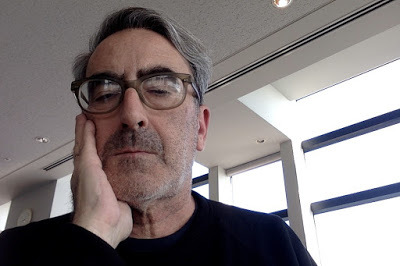
At the time, I had a portable CD Walkman from Sony. The Honeycombs CD was the only music I had in this city, and therefore when I went on my daily long walks through the town, I would play this album. It shouldn't be a shock to anyone that the entire album is a masterpiece. Also, it was the first time I was introduced to the world of record producer Joe Meek. I discovered him at The Wave Record store the following year but didn't realize the connection between The Honeycombs and his other recordings. "All Systems Go!" was the last album he made with a band. After that, he shot his landlady and then killed himself. At the time, I wasn't thinking of Meek, but more of the emotional power of the music as I wandered through the streets of Moji-Ko.
I didn't bring the CD or music with me on this trip, but I did revisit the spaces I spent time. Oddly enough, very little changes here. To be kind life is slow, or to be honest, perhaps died. For reasons I'm not clear about, I find Japan to be a mixture of sadness with a touch of happiness. There is little youth activity here. I mostly see old people wandering around, and I realize that perhaps, I'm the same age as them. A collective decay that is tattooed on the moldy side of the building structures. There is a cat cafe located in a very dark area of the arcade. Even the kitties here are as old as the residents of Moji-Ko.
One is never aware of the present. The future is non-existent, but there are traces of the past throughout Moji-Ko. Some on purpose and others to remind one that there is no future. The present is the past, and the future, who knows?
I come upon an old coffee shop that has been opened since the 1920s. Perhaps using the same cups from that decade. I ordered hot coffee because, for one, it is the only thing I can order using the Japanese language. I was asked to choose a cup that was hanging by the entrance. I spent a full minute before choosing the striped cup from the bottom, the second cup. When I sat down, it felt like I was in someone's living room. There was a TV set playing old Astro Boy black and white cartoons, and as I sipped my coffee, I found myself totally engrossed with the images coming off the TV screen. Science makes Mighty Atom (the proper term for "Astro Boy"), and there are touches of the wonderment and optimism of that period when things can get better. Now, I think we all feel differently where that confidence was placed.
After finishing the coffee, I walk down the arcade, and I look up, and I notice a window on the second story that is covered with books and what looks like manuscripts. I did see the entrance, and it seems to be a private residence. No signage by the door, and if you look through the door opening there is a very steep and dark staircase that goes up to that room. What kind of person would leave such a stack of stuff by the window, for everyone to see? A writer of course! It doesn't take that much of imagination to know that there are empty sake bottles and cigarette smoke in that room. The poet of Moji-Ko is probably the same man who wrote "The Plum in Mr. Blum's Pudding." A groundbreaking book of poetry that was written in 1990 at this very location.
I wander down the arcade, and I can hear the rain hitting the tin roof. It's not loud but very rhythmic, and I can imagine the poet using the sound like a rhythm to his poems. One hopes that there are more stores open here, but everything is from the past. "Last Year at Moji-Ko" comes to mind when I think back at the time I have met a young student here. I was looking for some girl to penetrate and release the tensions within me, but alas, we talked about literature and drank coffee till 5 pm. She may have been a teenager, but her use of English as a second language was very sophisticated. She told me she learned the language by watching various plays by Shakespeare on film. Her "this" became "tis" but otherwise totally understandable and charming. I had the feeling that she wanted me, but it is hard to tell from my point of view. It's a crap shoot to acknowledge desire when one thinks too much about the cultural difference between us. Although she spoke English, I can tell her thinking was in another frame of mind. I remember after finishing her coffee, she said goodbye and left the coffee shop not giving a farewell glance. More like there is no future, and there is the present, and one will think of this as the past.
With those thoughts in my head, I realized I was walking not being aware of direction or where I'm. I found myself in a small street that I have never seen before in Moji-Ko. There is an old bicycle on my left, with a notice of some sort, I think it's a menu. I went straight through without thinking of anything. Andre Breton wrote about this feeling in his novel "Nadja." Here he was looking for a girl throughout Paris, but now, I'm looking for nothing, just pushing my body through the narrow streets like there is a magnet down the street.
Around the corner, I came upon a man wearing a white waiter's jacket and a blue cap. He had a bow-tie and a soft yellow button up shirt. He didn't say anything, but with his gesture of the left hand told me to have a seat at his table. His face reminded me a bit of the artist Paul McCarthy, but then again, after awhile, all foreigners to me looks like Paul McCarthy. He didn't say a word to me, and I just acknowledge him by going to the cafe behind him and purchasing a glass of draft beer. I put it in front of him, but he didn't say anything. As I sat there nursing my glass of beer, I realized I never felt so content with the present. I have this whole history behind me, and I can't see anything at the head of me. I realize at that point and time that I'm going in the right direction, and when I look back, it's either death chasing me down, or something there to remind me of various things I have lost throughout my life. It was then that I got up and realized I must leave Moji-Ko. Like a stray cat that keeps coming back to its abandoned home, I will do the same.
- Tosh Berman, Moji-Ko, Japan
Published on February 28, 2017 23:29
February 27, 2017
February 27, 2017 (Tosh's Diary) Japan
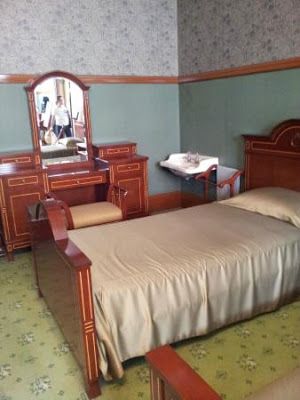 Albert Einstein's room in Moji-Ko, Japan
Albert Einstein's room in Moji-Ko, JapanFebruary 27, 2017 (Tosh's Diary) Japan
For the last couple of days, I have been in Moji-Ko, which is part of the southern island of Kyushu in Japan. I'm here with my wife, and she is from this town. In 1989, I lived here for a whole year. It's ironic that I have always tried to avoid small towns, yet, always end up in one. Moji-Ko is technically a port city, where across from the Japan Sea there's Korea. Before World War II, Moji-Ko was the location to go back and forth to Korea. It was a lively town full of adult entertainment as well as cinema, live theater, and Geisha action. Albert Einstein came through Moji-Ko and stayed in a structure that is technically the next block where I'm writing this piece. There's a plaque announcing the visit, but no image or photograph exists that I know of, having him here in the city. When in doubt I always go with the narrative. So there is no reason to question that he was here in Moji-Ko.
Moji-Ko Retro Observation Room, Japan
Compared to Kyoto or other parts of Japan, Moji-Ko's structures are not that old. My guess is that the oldest building here is about 105 years old. Still, there is a particular Meiji period feeling in the structures as well as the roadways. I'm writing this report on the 31st floor of the observation deck. The city is very much laid out in front of me, and it looks like I'm observing a google map, but I'm really here. But have I ever been anywhere?
 Dead Fugu, but still deadly, in Moji-Ko, Japan
Dead Fugu, but still deadly, in Moji-Ko, JapanI had dinner last night at a local restaurant. Blow-Fish (Fugu) is the main specialized dish in Moji-Ko. The fish is very toxic and lethally poisonous if you eat the wrong part of the Blow-Fish. People in the West are alarmed, but the Japanese seem to take it in the style that nothing will happen to them if they eat Fugu. The fish itself is delicious. I ate it in many ways. Sashimi style as well as cooked and served in soup. I never felt in danger, because the people around me took it as being prepared by an experienced chef. If you do get poisoned by eating the fish, the effects are similar to nerve gas such as Sarin or VX. The victim is conscious, but their muscles will be paralyzed and eventually, one can't breathe and will die from asphyxiation. This happens time-to-time, but what are the chances of that happening to me?
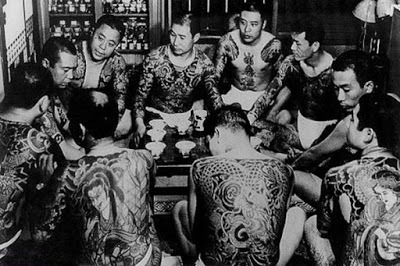 Gentlemen who ate at the same restaurant
Gentlemen who ate at the same restaurantBack to the restaurant, we were sitting at the counter eating Fugu, when I notice the party next to me was sending a bottle of Shochu to another table. They were drinking beer and what looked like bottles of Shochu. They were bottle-keep, which means the customer buys the bottle and keeps it at the restaurant for themselves. Hardcore Asian tradition of drinking in bars. There were three of them. One was a young woman, who looked like she killed a man or two. Beautiful but I sense a hardness in her attitude. The two guys she was with had various forms of jewelry on, including one who had two watches attached to each wrist. He also had what looks like a diamond stone around his neck. The other thing I notice is that anyone who walks into the restaurant made a gesture of being a friend or bowing to this trio. To not to acknowledge them in a specific world would have been a deadly mistake.
The Author's laptop while writing this essay in the Observation Room in Moji-Ko
I made the Mojiko Retro Observation Room as my office while here. I find it suitable to be on the 31st floor looking out to the Japan Sea and commenting on the town and people down below. It's an idea space for a writer to do his or her's work. From here, I can see my home in Moji-Ko. My wife and I live on the 13th floor of that building. So at nighttime, I can sit in the outside hall and look at the place where I do my work. And oddly enough, I sit in the Observation Room watching the place where I live.
The Author lives on the 13th Floor of this buiding
I have a deep interest in my culture, especially when I'm in a foreign culture. It is what makes Americans so unique. I had a beer, drinking some coffee now, and just had a chocolate cookie. I'm all set, and about to go into the sunset and become one of the small people down below.
Moji-Ko Retro Observation Room at night; Photographed from my 13th Floor apartment across the way
Published on February 27, 2017 23:14
Images of Japan by Tosh Berman
Portrait of Tosh Berman, Tokyo, Japan
Tokyo Bus, Meguro, Tokyo
Western style wedding party, Tokyo
Piss Alley, Shinjuku, Tokyo
Messed-up face display for manga series: Shinjuku, Tokyo
Bar entrance, Nakano Broadway area, Tokyo
Harajuku, Tokyo
Bar in Nakano Broadway area, Tokyo
Hotel in Broadway Nakano, Tokyo
Window display for music shop, Ginza, Tokyo
Meji Park, Tokyo
Music Shop (floor-by-floor) window display, Ginza, Tokyo
Wedding Ceremony at Meji Shrine, Tokyo
Aoyoma, Tokyo Abandoned home
Naked Dolls, but can add clothing, accessories, etc.
Ginza coffee shop, Ginza Tokyo
Ginza Street, Ginza Tokyo
Ginza, Tokyo at dusk
Tom Cruise
Brad Pitt
Doll Faces, Tokyo
Yakuza Dolls
Mid-Century design house items doll size
Rabbit Shrine, Kyoto
Kyoto Burial Grounds
Kyoto Burial Grounds
Meguro, Tokyo, Japan
Tokyo Bus, Meguro, Tokyo
Western style wedding party, Tokyo
Piss Alley, Shinjuku, Tokyo
Messed-up face display for manga series: Shinjuku, Tokyo
Bar entrance, Nakano Broadway area, Tokyo
Harajuku, Tokyo
Bar in Nakano Broadway area, Tokyo
Hotel in Broadway Nakano, Tokyo
Window display for music shop, Ginza, Tokyo
Meji Park, Tokyo
Music Shop (floor-by-floor) window display, Ginza, Tokyo
Wedding Ceremony at Meji Shrine, Tokyo
Aoyoma, Tokyo Abandoned home
Naked Dolls, but can add clothing, accessories, etc.
Ginza coffee shop, Ginza Tokyo
Ginza Street, Ginza Tokyo
Ginza, Tokyo at dusk
Tom Cruise
Brad Pitt
Doll Faces, Tokyo
Yakuza Dolls
Mid-Century design house items doll size
Rabbit Shrine, Kyoto
Kyoto Burial Grounds
Kyoto Burial Grounds
Meguro, Tokyo, Japan
Published on February 27, 2017 18:08
February 23, 2017
February 24, 2017 (Tosh's Diary) Shinkenshan Train ( Tokyo - Kyoto)
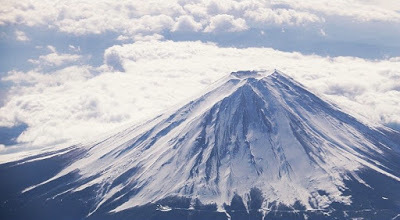
February 23, 2017
On the Shinkansen (Bullet Train) on the way from Tokyo to Kyoto. There is something so civilized when one travels on a train compared to a flying machine. For one, I can watch the landscape unfold onto another world. It's a leap into the future as the Shinkansen moves at the speed of 200 mph. From my window, I can see Mount Fuji, which is a ghost mountain. Osamu Dazai wrote this amazing short story about Mount Fuji, "One Hundred Views of Mount Fuji," and how it is so prominent in one's life. The last scene of the story is when tourists come upon the narrator (who we presume is Dazai) and ask him to take a photograph of them with Mount Fuji in the background. He gave them time to pose, and then without them knowing, Dazai focused the camera upward on taking a photo of the mountain, leaving the tourists out of their photograph. Sometimes a location is even greater than the individual.
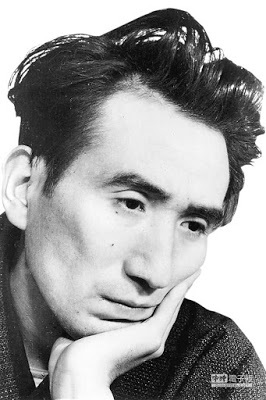
Published on February 23, 2017 21:45
February 23, 2017 (Tosh's Diary) Japan
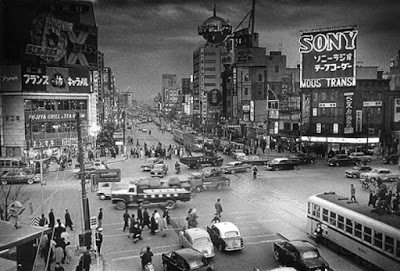
February 22, 2017 (Tosh's Diary) Japan
When I want to feel someone, not like me, I go to the Ginza district in Tokyo. I like to go window-shopping and imagine that I'm purchasing objects that I can't realistically afford. I have always been attracted to music shops that sell not only CD's but also instruments that I can't play. I live in an imaginary world where I'm a master musician. The great thing about Tokyo is that there are endless things to see, and therefore worlds that one can enter, without the knowledge of that world. I'm also fond of the neon lighting in the Ginza. Soft compared to the harsh light of such locations as Shinjuku or Shibuya.
Ginza to me represents 1960s gangsters hanging out in a bar. I only know this due that I have watched many comedies as well as gangster films that take place in the Ginza. Whatever this is true or not is not something I'm concerned about. It's similar to going to Disneyland and being a concern if Mickey Mouse exists or not in real life. I'm blessed in the sense that I never care about the reality of the place or situation, but what is important is how I imagine the place.
I leave Tokyo today for Kyoto. I often think that there is a connection between the two cities. Again, my knowledge is only attached to what I think - it could be just the name "Kyoto" that brings up images in my head. I'll let you know when I get there.
Published on February 23, 2017 03:21
February 20, 2017
February 20, 2017 (Tosh's Diary) Japan
February 20, 2017 (Tosh's Diary) Japan
The essence of failure is the self-knowledge of going down the drain, and there is nothing to hold on to. There is a gentleman that I read about here by the name of Gensiro Kawamoto, who owns landmark property here in Tokyo as well as throughout Japan, and Hawaii extending to California. He is one of the wealthiest men in Japan, and according to sources, he only pays in cash, and never credit. He is one of the very few who has no debt. One can see his logo throughout the Ginza (the Beverly Hills of Tokyo) on the side of buildings. "Marugen" always stands for Mr. Kawamoto. He rarely does interviews (an actual billionaire has no need for the popular press), and he rarely sleeps. Perhaps four hours a night, and his only interest is the making of the deal. He's addicted not to power, but the gamble of obtaining property. There are 60 buildings in Japan with his name on it.
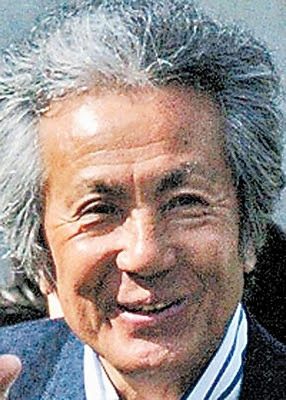 Gensiro Kawamoto
Gensiro Kawamoto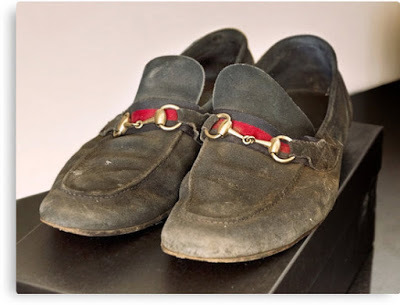 Gensiro Kawamoto's shoes
Gensiro Kawamoto's shoesMost of Kawamoto's buildings are leased to various hostesses bars, and entertainment centers throughout Shinjuku, Ginza, and Roppongi. The essence of Tokyo, at least to my eyes, is Gensiro Kawamoto. I often imagine my life with such individuals as Kawamoto and realize that I don't have the talent or brains to follow through life in such a challenging manner. My weakness disgusts me to no return. Here I imagine life within the Stephen Bannon world, and he's just an ambitious fly to a bigger piece of excrement. I have been reading on Julius Evola's text, or what I can find on the Internet. Bannon often drops his name in conferences at various right-wing think tanks. This Italian Futurist and one-time member of DADA is the key to the entrance of what ills us today. The problem is the President of the United States is a man who doesn't read, yet Bannon is an excellent reader on many levels. I suspect Kawamoto to be in the same league as Bannon. Ego is the downfall and the men behind the curtain rule the chicken coop.
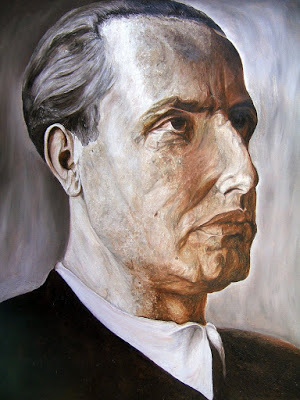 Julius Evola
Julius Evola
Published on February 20, 2017 17:17
February 19, 2017
February 19, 2017 (Tosh's Diary) Japan
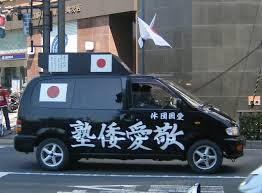
February 19, 2017 (Tosh's Diary) Japan
As I write, I'm like a fuse that's burning, and once the explosion hits, the world I know will be torn into pieces of flesh and metal. I can tell things are bad because people are avoiding me like I'm the wrong reporter in the White House press conference. Ever since yesterday, I have been printing out images of Stephen Bannon from the internet. I'm convinced that he's a murderer. I saw the man once, the one who caused my father's death. Ever since then, I wished for him to rot outward to his inners. Bannon looks like a man that is rotting by the second. Like a hanging banana left too long on the kitchen counter, Banner is clearly decaying in front of my eyes. If you poke too hard, he will explode. It makes me sick to my stomach that I approach him about helping to build a statue in the President's honor. I now want to burn my plans and scatter the ashes into Bannon's whiskey and water.
On the other hand, it's a beautiful day in Tokyo. I spent some quality time in Shinjuku. I borrowed a jacket from a member of the family here, and there is something fantastic when you leave an over-warmed room into the cold air. I never felt so clean before. I like to lose myself in the crowd. It's the only time that I can forget about myself, and become this force. I even enjoy the Far Right in the Shibuya Station. At least four vans followed an all-black van that looked like they had metal fencing around the windows. On the top of the vehicle are four huge loud speakers. Not sure if it's a tape they are playing or an actual person in the car with a microphone. Free speech being allowed, but in a volume where one can hear it for miles. If Trump were smarter, he would have a series of these type of trucks driving through rural and urban centers. He can stay at Mar-a-Lago with "the set," and at the same time, Trump can have these trucks plow through the countryside. Japan always have better ideas than the West.
Today I will plan for my future.
Published on February 19, 2017 16:16
February 18, 2017
February 18, 2017 (Tosh's Diary) Japan
February 18, 2017 (Tosh's Diary)
I must have my revenge. I can see now, that I'm in Tokyo, that the moment has risen for me to strike. I have missed the opportunity on a continuous basis for my entire life. I'm having a series of drinks in Harajuku bar, all by myself. I'm not drunk. In actuality, I'm quite sober. The situation is, every February 18, I see appearances of my late father. I'm used to seeing him in Los Angeles, but it's odd that this spirit has followed me to Tokyo. I was walking in Shinjuku last night, and I noticed this foreigner in a large hat and fur coat following me. I ducked into a Disk Union shop in hopes of avoiding this figure. I was going over the Beatles Japanese pressings of various Sgt Pepper covers when I looked up and saw the foreign fellow. It was my father. In these type of situations, I pretend not to notice him. When I looked up again, he was gone.
I have accepted that I had these visions and learned to live with them. Still, the big difference is that I'm in a foreign country - a different culture, and still, there is my father in front of me. What bothers me the most is that I feel that he's giving me a message of some sort. Throughout my life, I ignored any signs of bitterness on my part. The truth is, I'm very bitter. I live my life as if it's daytime. Still, the night has pretty much taken over my soul.
I'm a fiction writer, and I take daily life as a source for my work. It's the foundation where my ideas come from. The most traumatic thing that ever happened was my dad's murder. In fact, I guess it was an accident, but I never accepted it as just an accident. Because the way the case came out, it clearly is about a man avoiding his crime, and where he is now, or if even he's alive is like a mist that surrounds me on a daily basis whenever I allow my mind to wander without any censorship or constrained in any fashion.
I walk around Tokyo because it clears my head. I'm not really a tourist, but more of a person who puts a jacket on, and leaves the front entrance of a building, without a thought which direction to go. If the winter wind is going a direction, I just follow that force without a thought in my head. Stephen Bannon has been pretty much in my brain. It was last night that I realize he looks like the guy who killed my father in a drunken so-called car accident. Much younger then, but now he has the face of a man who has enjoyed his poison for many years. It's odd today that I saw two weddings. One Japanese style and the other western. It seemed like theater. I can never penetrate the difference between what I consider to be something real or a staged performance. I wander now, like forever.
Published on February 18, 2017 16:05



